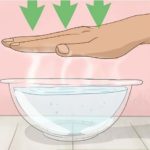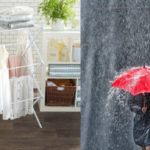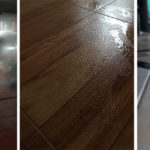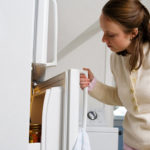Why shouldn’t you turn on a fan when the weather is damp?
Damp weather causes many inconveniences in people’s lives. Houses are damp, electronic devices are prone to damage, and people are more susceptible to respiratory diseases.
To alleviate dampness, many people believe that turning on a fan will be effective as it can blow away moisture. However, in reality, it is not the case.
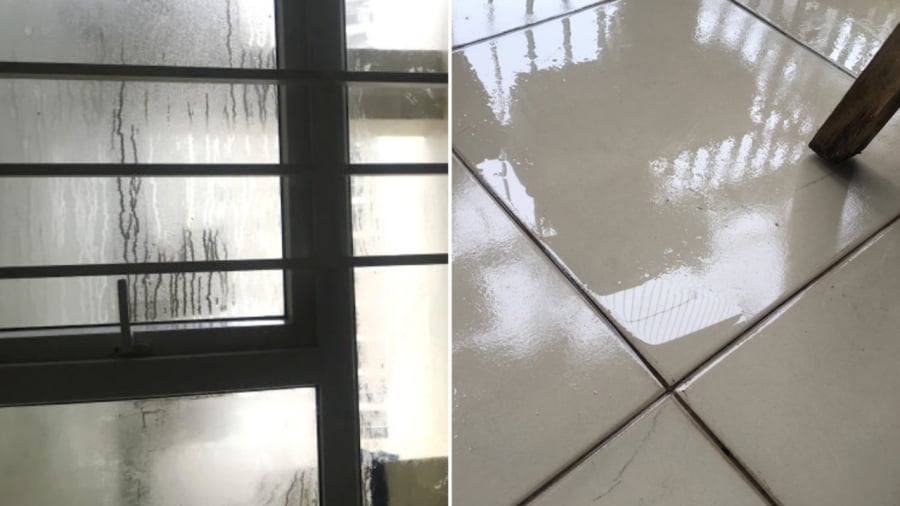
Damp weather causes water to accumulate on the house walls, floors, and other objects.
The air blown from a fan does not evaporate the moisture but rather condenses it even more, leading to more water accumulation. The reason is that the fan’s breeze cools down the temperature. When the temperature is low, water vapor condenses more easily.
Some ways to reduce indoor dampness during humid weather
– Close the doors
During humid weather, when the floors and walls “sweat,” it is best not to open the doors. Many people believe that opening the doors allows airflow and dries out the house. However, the truth is that when opening the doors on damp days, moist air from outside will enter the house and make it even more damp. Therefore, unless necessary, you should keep the doors closed and only open them when necessary.
In particular, the bathroom is the dampest area in the house. You should prevent moisture from spreading to other rooms. Therefore, after using the bathroom, it is advisable to close the door to prevent the moist air from escaping. If you use a bathtub, drain cold water first before adding hot water. This helps limit water vapor rising and prevents water condensation in the bathroom.
– Increase the room temperature
High humidity combined with low temperature increases water vapor condensation. Sweating often occurs in rooms with lower temperatures than the outside. Therefore, you can increase the room temperature by turning on the heater or adjusting the thermostat…
– Avoid placing plants in the room
Plants are excellent air purifiers. However, they also release a significant amount of moisture. The more plants you have in the room, the higher the humidity. Therefore, during humid weather, it is best to limit the number of plants inside. It is recommended to move them to a well-ventilated area. Only bring them back inside when the weather is no longer damp.
– Use moisture-absorbing materials
To reduce indoor humidity, you can use the dehumidifying mode of air conditioners or, preferably, use a dehumidifier. However, both of these devices are relatively expensive and consume a lot of electricity, so not every family can afford to use them. To address excessive moisture during damp weather, you can prioritize using moisture-absorbing materials such as baking soda, white salt, white lime, rock salt, moisture-absorbing bags, moisture-absorbing containers, etc. Place these items around the house (but keep them out of reach of children and pets) to absorb excess moisture and keep the house dry.
– Clean the house with dry cloth
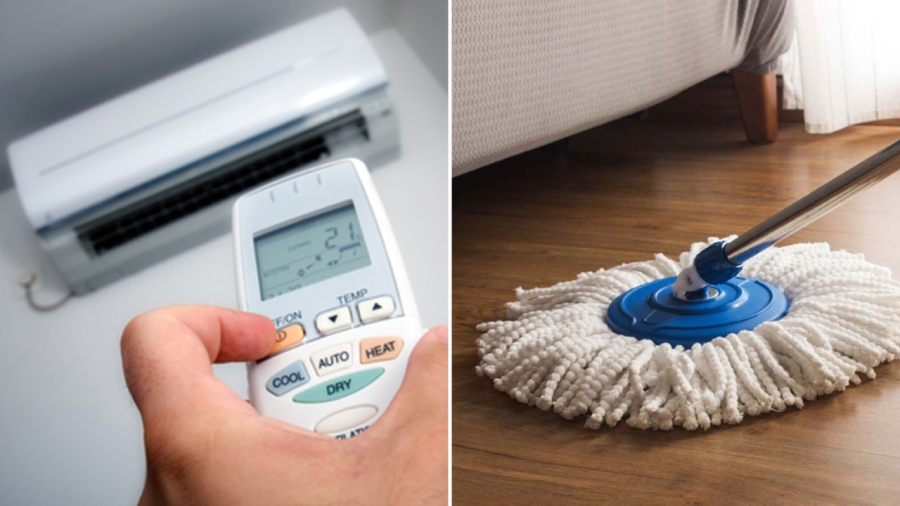
Turning on the dehumidifying mode on the air conditioner and cleaning the house with a dry cloth are ways to keep the house dry during damp weather.
On damp days, the floor often sweats, creating a sticky feeling and making it slippery. Some people clean the house with water mixed with cleaning agents to keep it clean. However, using water will make the floor even more damp. In this case, you should only use a dry cloth to clean the floor and ensure it is dry.
If the walls sweat a lot, you can also use a cloth to wipe off the accumulated water to reduce the damp feeling.

























